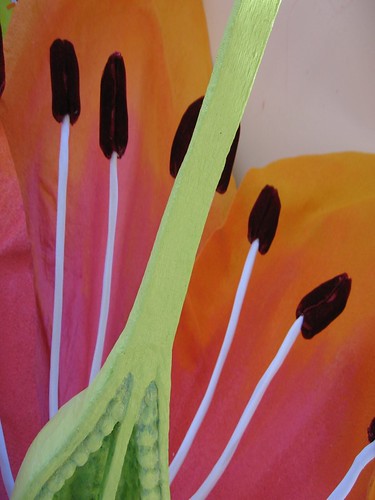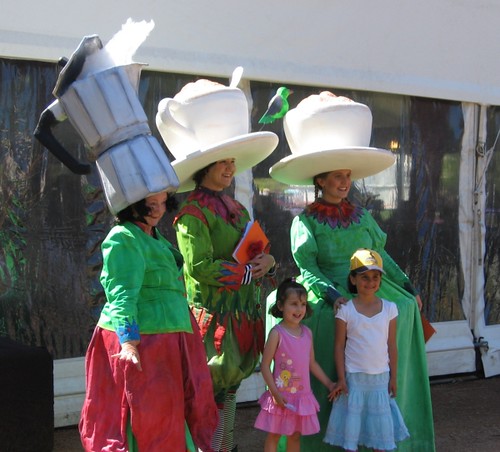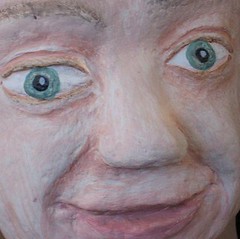My third project for Floriade was making a giant model flower in cross-section, to be the central display in CSIRO’s Division of Plant Industry’s information tent. I really enjoyed making this, too. Some projects go really easily and this was one of those!
The petals were the main challenge, but I decided pretty quickly to use a molded felt technique that I had previously tried with some masks. Essentially you saturate felt in white PVA glue, mold it to the shape you want, and then let it dry. It adopts the shape and becomes fairly hard and plasticised in a way. You can paint it, too, and the way the paint bleeds through the felt can be used in different ways, some quite sensuous. In this case, I made a petal shape in clay and each petal had a double layer with some aluminium flat bar running up the middle to give it extra rigidity. The interesting thing about the technique apart from the obvious texture, is that the felt can be stretched and pulled but remain in one piece. In this respect natural wool felt is much better to work with because it pulls and moves much more than synthetic felt. But synthetic is okay if you don’t have a choice.
I think the flower may end up being displayed in the CSIRO Discovery Centre, where some of my insect models are too; I hope so.









